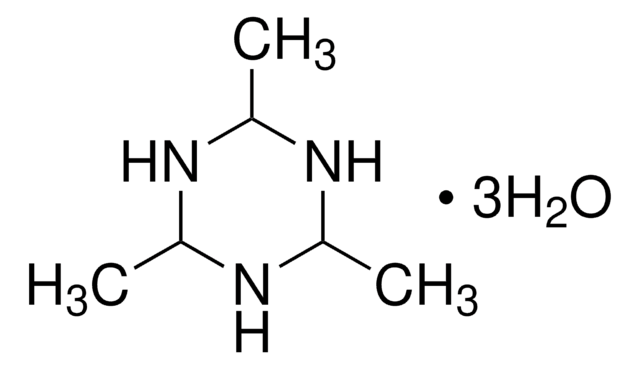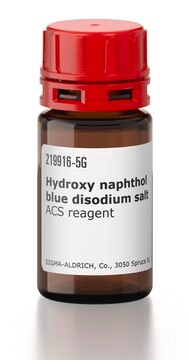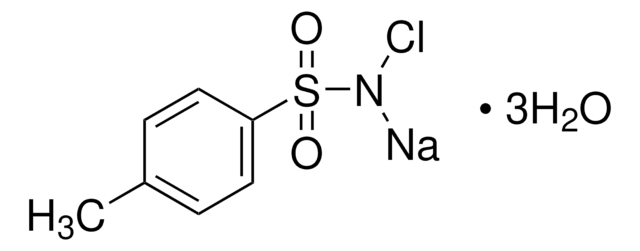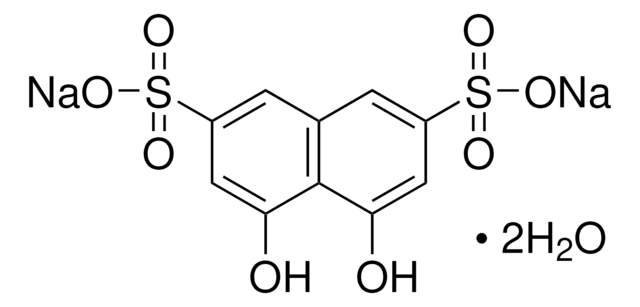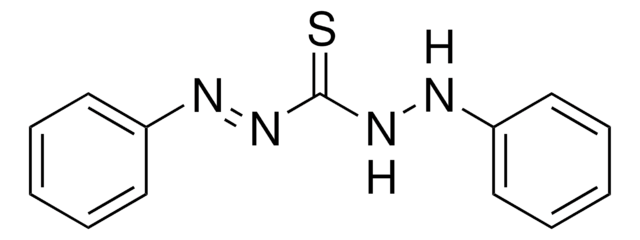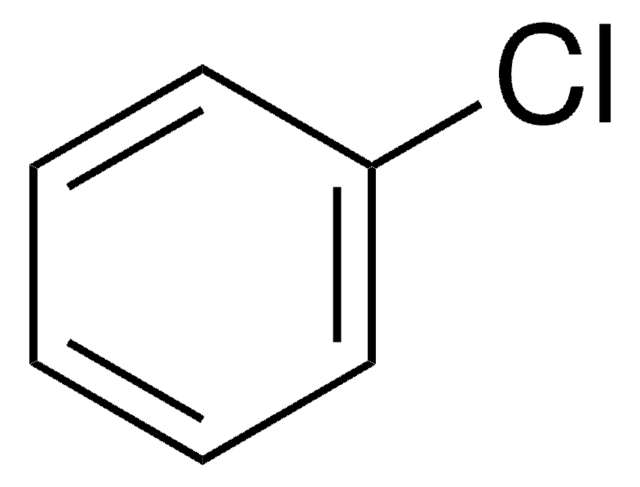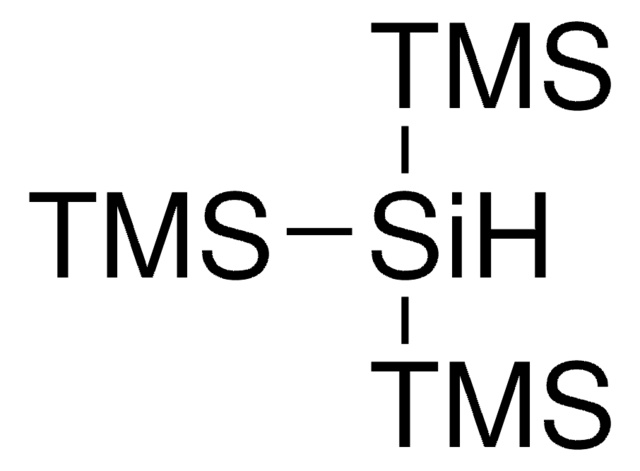Kluczowe dokumenty
201316
Quinaldine Red
Dye content 95 %
Synonim(y):
2-(4-Dimethylaminostyryl)-1-ethylquinolinium iodide
About This Item
Polecane produkty
Formularz
powder or crystals
Poziom jakości
skład
Dye content, 95%
metody
titration: suitable
rozpuszczalność
ethanol: 1 mg/mL, clear, dark red
λmaks.
528 nm
Zastosowanie
diagnostic assay manufacturing
hematology
histology
temp. przechowywania
room temp
ciąg SMILES
[I-].CC[n+]1c(\C=C\c2ccc(cc2)N(C)C)ccc3ccccc13
InChI
1S/C21H23N2.HI/c1-4-23-20(16-12-18-7-5-6-8-21(18)23)15-11-17-9-13-19(14-10-17)22(2)3;/h5-16H,4H2,1-3H3;1H/q+1;/p-1
Klucz InChI
JOLANDVPGMEGLK-UHFFFAOYSA-M
Szukasz podobnych produktów? Odwiedź Przewodnik dotyczący porównywania produktów
Powiązane kategorie
Zastosowanie
Działania biochem./fizjol.
Kod klasy składowania
11 - Combustible Solids
Klasa zagrożenia wodnego (WGK)
WGK 3
Temperatura zapłonu (°F)
Not applicable
Temperatura zapłonu (°C)
Not applicable
Wybierz jedną z najnowszych wersji:
Masz już ten produkt?
Dokumenty związane z niedawno zakupionymi produktami zostały zamieszczone w Bibliotece dokumentów.
Klienci oglądali również te produkty
Nasz zespół naukowców ma doświadczenie we wszystkich obszarach badań, w tym w naukach przyrodniczych, materiałoznawstwie, syntezie chemicznej, chromatografii, analityce i wielu innych dziedzinach.
Skontaktuj się z zespołem ds. pomocy technicznej

